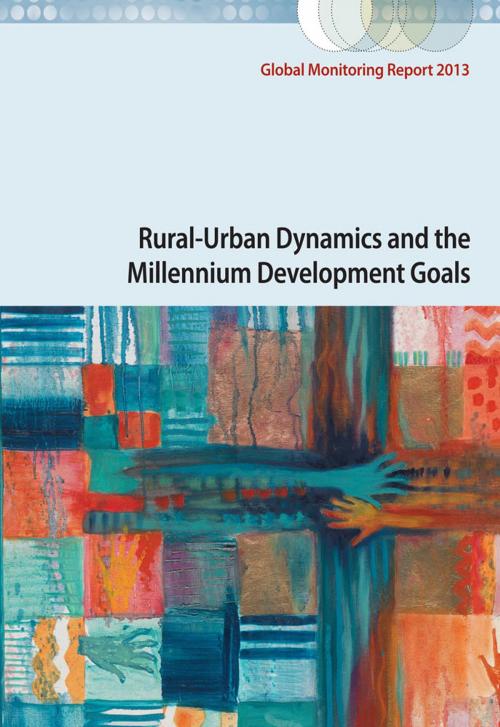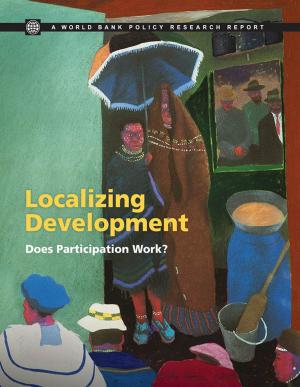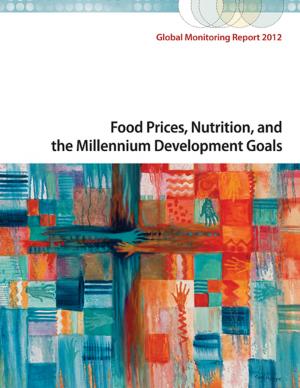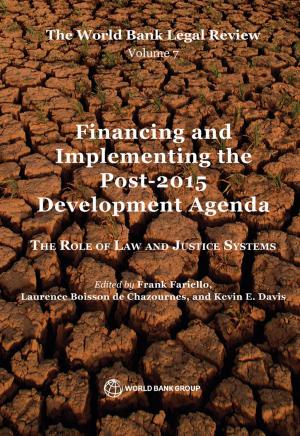Global Monitoring Report 2013
Rural-Urban Dynamics and the Millennium Development Goals
Business & Finance, Economics, Urban & Regional, Macroeconomics, Economic Development| Author: | World Bank, International Monetary Fund | ISBN: | 9780821398081 |
| Publisher: | World Bank Publications | Publication: | May 2, 2013 |
| Imprint: | Language: | English |
| Author: | World Bank, International Monetary Fund |
| ISBN: | 9780821398081 |
| Publisher: | World Bank Publications |
| Publication: | May 2, 2013 |
| Imprint: | |
| Language: | English |
The Global Monitoring Report 2013: Rural-Urban Dynamics and the Millennium Development Goals examines rural-urban disparities in the achievement of the Millennium Development Goals (MDGs) and how urbanization, if managed well, can contribute to the attainment of these goals. The report provides information about the differences in progress toward the MDGs across geographical areas and recognizes that urban populations are better off than their rural brethren. However, unfettered urbanization can cause migrants and the urban poor to end up in slums where attainment of the MDGs lags. GMR 2013 calls for an integrated strategy to better manage the planning-connecting-financing formula of urbanization. Notwithstanding the importance of urbanization in poverty reduction and MDG attainment, rural areas remain a huge challenge—one that underscores the importance of policies that can improve rural livelihoods. The rural-urban spectrum ranges from small towns to large cities. The general experience is that poverty is lowest in the largest cities and considerably higher in smaller towns. The MDGs reflect the basic needs of all citizens, and governments should aim to meet them fully in both urban and rural areas. However, resources are scarce, so priorities must be set and trade-offs made. The report argues that the sequencing of actions be tailored to local conditions when it comes to the degree of urbanization and rural-urban differences in MDG outcomes. The world has met four global MDG targets. New estimates confirm the 2012 reports that MDG 1.a—reducing the $1.25-a-day poverty rate (2005 purchasing power parity)—was reached in 2010, falling below half of its 1990 value. The world also met part of MDG 7.c—to halve the proportion of people without safe access to drinking water—in 2010. MDG 7.d—to improve significantly the lives of at least 100 million slum dwellers by 2020—was also achieved. Finally, the first part of MDG 3.a—to eliminate gender disparity in primary education— was accomplished in 2010. Global progress on the full MDG 3.a (to eliminate gender disparity in primary and secondary education) is close to being on track. Global Monitoring Report 2013 was prepared jointly by the World Bank and the International Monetary Fund, with consultations and collaborations with regional development banks and other multilateral partners.
The Global Monitoring Report 2013: Rural-Urban Dynamics and the Millennium Development Goals examines rural-urban disparities in the achievement of the Millennium Development Goals (MDGs) and how urbanization, if managed well, can contribute to the attainment of these goals. The report provides information about the differences in progress toward the MDGs across geographical areas and recognizes that urban populations are better off than their rural brethren. However, unfettered urbanization can cause migrants and the urban poor to end up in slums where attainment of the MDGs lags. GMR 2013 calls for an integrated strategy to better manage the planning-connecting-financing formula of urbanization. Notwithstanding the importance of urbanization in poverty reduction and MDG attainment, rural areas remain a huge challenge—one that underscores the importance of policies that can improve rural livelihoods. The rural-urban spectrum ranges from small towns to large cities. The general experience is that poverty is lowest in the largest cities and considerably higher in smaller towns. The MDGs reflect the basic needs of all citizens, and governments should aim to meet them fully in both urban and rural areas. However, resources are scarce, so priorities must be set and trade-offs made. The report argues that the sequencing of actions be tailored to local conditions when it comes to the degree of urbanization and rural-urban differences in MDG outcomes. The world has met four global MDG targets. New estimates confirm the 2012 reports that MDG 1.a—reducing the $1.25-a-day poverty rate (2005 purchasing power parity)—was reached in 2010, falling below half of its 1990 value. The world also met part of MDG 7.c—to halve the proportion of people without safe access to drinking water—in 2010. MDG 7.d—to improve significantly the lives of at least 100 million slum dwellers by 2020—was also achieved. Finally, the first part of MDG 3.a—to eliminate gender disparity in primary education— was accomplished in 2010. Global progress on the full MDG 3.a (to eliminate gender disparity in primary and secondary education) is close to being on track. Global Monitoring Report 2013 was prepared jointly by the World Bank and the International Monetary Fund, with consultations and collaborations with regional development banks and other multilateral partners.















